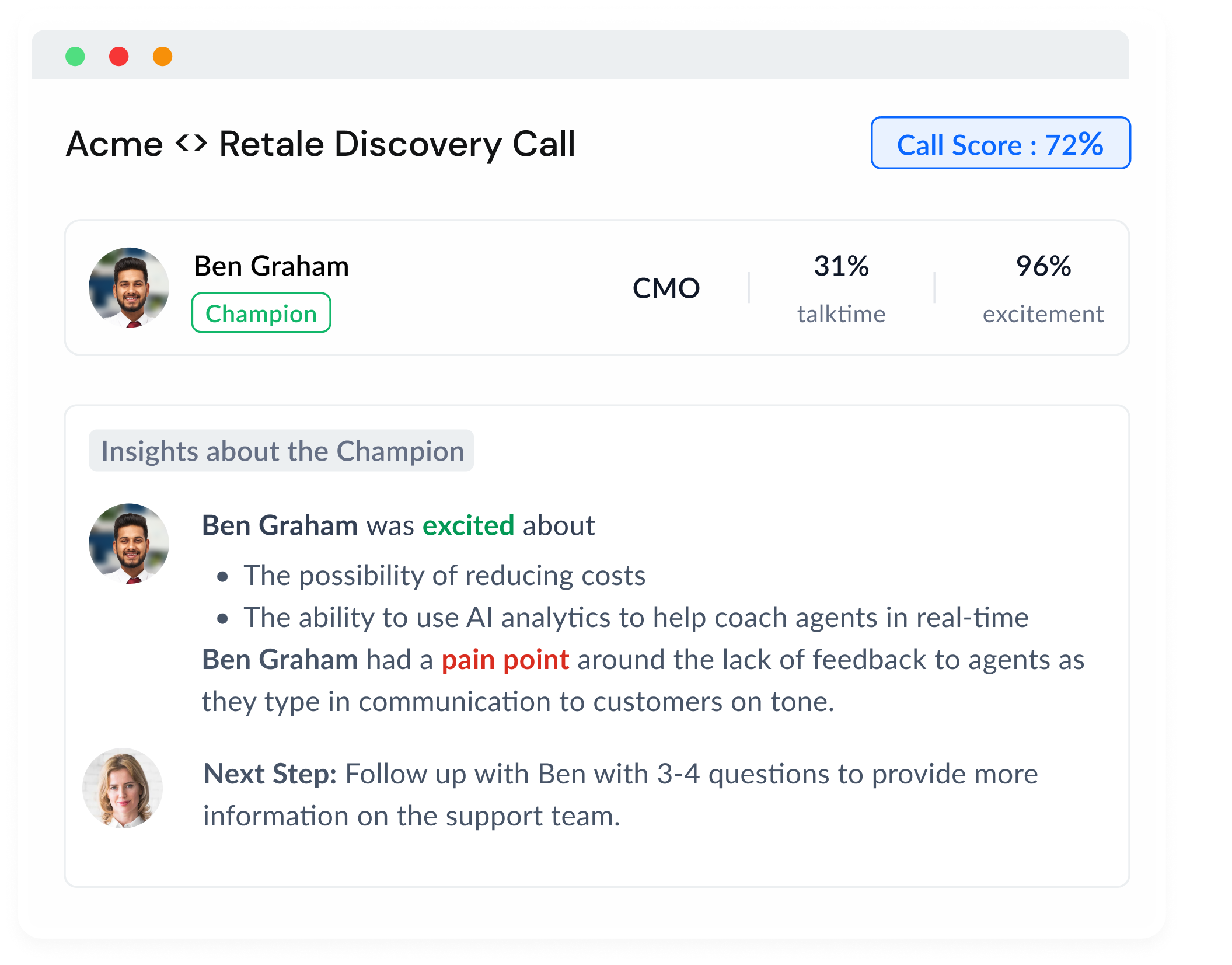As a sales professional, your time is valuable, and you want to make sure that you are focusing your efforts on the prospects that are most likely to become customers. This is where BANT comes in - a framework for qualifying prospects that can help you prioritize your leads and focus on those that are most likely to convert. In this blog post, we'll explore what BANT is, how it works, and how you can use it to qualify your prospects effectively.
No sales qualification framework is going to automatically make you a better seller or your team a quota crusher. But it will help provide the right guardrails, processes, and metrics to help you do the same.
What is BANT?
BANT is an acronym that stands for Budget, Authority, Need, and Timeline. It is a framework that sales professionals use to qualify leads and prioritize their efforts. By evaluating prospects based on their budget, decision-making authority, need for your product or service, and timeline, you can determine which leads are most likely to become customers and focus your efforts accordingly.
Note that BANT is just one of the many frameworks that you can use to guide and evaluate your qualification efforts. Other popular sales qualification frameworks include MEDDICC (and its variations), SPICED, etc.
How Does BANT Work?
BANT works by asking specific questions to determine whether a prospect meets the criteria for each of the four elements of the framework:
Budget: Can the prospect afford your product or service? What is their budget for this type of purchase?
Authority: Does the prospect have the decision-making authority to buy your product or service? Who else needs to be involved in the decision-making process?
Need: Does the prospect have a need for your product or service? What specific problems or pain points are they trying to solve?
Timeline: When does the prospect need to make a decision? What is their timeline for implementing your product or service?
Answering these questions lets you gauge if a prospect aligns with your product or service, allowing you to tailor your efforts effectively.
Examples of Using BANT
Here are some examples of how you can use BANT to qualify your prospects effectively:
Budget: If a prospect has a limited budget and cannot afford your product or service, it may not be worth investing a lot of time in pursuing that lead.
Authority: If the decision-making authority for a potential purchase lies with someone who is not present during a meeting or conversation, you may need to schedule a follow-up meeting or involve that person in the conversation.
Need: If a prospect has a clear need for your product or service and is experiencing specific pain points, you can tailor your sales pitch to demonstrate how your product or service can solve those problems.
Timeline: If a prospect needs to make a decision quickly, you may need to provide more urgent and compelling reasons for why your product or service is the best solution for their needs.
Sample questions to uncover the BANT points
Budget: Before investing time and resources into a lead, it's crucial to establish whether they have the financial means to purchase your product or service. Here are some questions to help you understand a prospect's budget:
- What is your budget for a solution like ours?
- Have you allocated funds for this type of project or solution?
- How does your company typically handle budgeting for new investments?
Authority: Understanding who has the power to make purchase decisions within a prospect's organization is vital. It allows you to identify the right person to speak with and ensures you're not wasting time on someone who can't move the deal forward. Consider asking these questions:
- Are you the person responsible for making decisions regarding this solution or project?
- Can you share the decision-making process within your organization for a purchase like this?
- Who else is involved in the decision-making process, and should they be included in our conversations?
Need: To successfully sell your product or service, it's important to understand the prospect's pain points and how your offering can address them. By asking need-based questions, you can determine the urgency and relevance of your solution to the prospect. Here are some examples:
- What challenges or pain points are you currently facing in your business that our solution could address?
- Have you tried any other solutions to address these issues? If so, what were the results?
- How critical is it for your organization to find a solution for these challenges?
Timing: Timing is a crucial factor in the sales process, as it determines when a prospect is likely to make a purchase. Identifying the right moment to engage with a lead can significantly impact the likelihood of closing the deal. Ask these questions to gauge the prospect's timeline:
- When are you planning to implement a solution for the challenges you're facing?
- Is there a specific event or deadline that makes this project a priority for you?
- How soon would you like to see results from a new solution?
Commonalities and Differences with Other Sales Frameworks
Each framework has its unique approach, but they all aim to streamline the sales process and prioritize leads. Let's dive into the commonalities and differences between BANT and two other popular frameworks, MEDDPICC and SPICED:
Commonalities:
Focus on qualification: All three frameworks emphasize the importance of qualifying leads before investing time and resources in the sales process. This approach increases efficiency and enables sales reps to concentrate on prospects with the highest potential for conversion.
Criteria-based assessment: Each framework uses specific criteria to assess the prospect's suitability, whether it's budget, authority, or decision-making processes. These criteria help sales professionals gauge the prospect's readiness and intent to purchase.
Sales process optimization: BANT, MEDDPICC, and SPICED aim to optimize the sales process by providing a structured approach to qualification, helping sales reps understand the prospect's needs and pain points, and accordingly deliver a great sales pitch.
Differences:
BANT (Budget, Authority, Need, Timing): It's a straightforward framework that emphasizes understanding the prospect's financial capability, decision-making authority, pain points, and the timeline for implementation.
MEDDPICC (Metrics, Economic Buyer, Decision Criteria, Decision Process, Identify Pain, Champion, Competition): MEDDPICC is a more comprehensive framework that goes beyond BANT by considering additional factors. This approach provides a deeper understanding of the prospect's situation and increases the chances of closing the deal. One can also interpret MEDDPICC as making certain fields of BANT a bit more nuanced and introducing a few more factors to understand. This is most common in evolved sales teams with experienced reps. It is important to note that not all factors in MEDDPICC are weighted equally, and not all of them are typically important in every deal.
SPICED (Situation, Pain, Impact, Critical Event, Decision Process, Evaluation Criteria): SPICED is another comprehensive framework that emphasizes understanding the prospect's current situation, pain points, impact of the pain on their business, critical events or deadlines, decision-making process, and evaluation criteria. It enables sales teams to tailor their approach based on each lead's specific pain points and requirements.
In essence, while BANT, MEDDPICC, and SPICED share the common goal of lead qualification and sales process optimization, they differ in the depth and breadth of criteria they consider. Choosing the right framework depends on your sales process, industry, and target audience. Some organizations may find BANT sufficient for their needs, while others may require the more detailed approach of MEDDPICC or SPICED to better understand their prospects and close deals effectively.
Conclusion
BANT is a powerful framework for qualifying leads and prioritizing your sales efforts. Assessing prospects on their budget, authority, need, and timeline allows you to pinpoint their challenges, identify promising leads, and tailor your approach for better conversions. So why not give BANT a try and see how it can help you streamline your sales process and improve your conversion rates?















.png)





